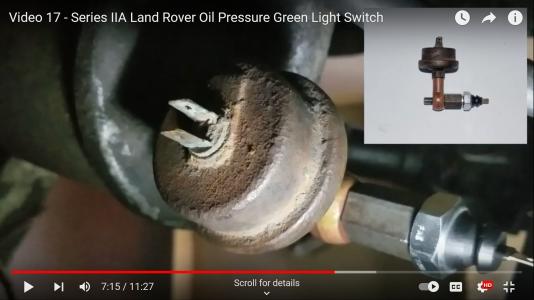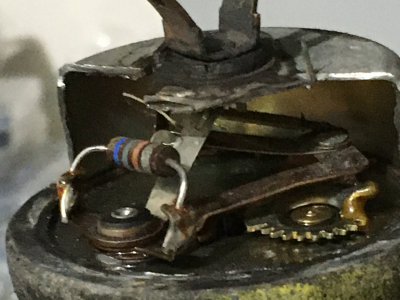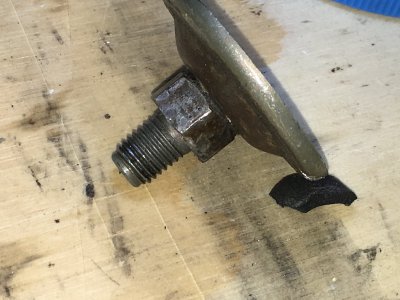As much as I love machining, I’m not a car guy nor an engine guy (automotive work is third on my list below plumbing and painting in my pantheon of hated activities).
I thought: What is an “oil pressure sender”, how does it work, and what does it look like?
It never I occurred to me until this moment that the oil pressure gauge in my cars needed some sort of sensor…
Google has been slightly helpful, but I’m still a little unclear.
They come in all sizes. A metal bulb, sometimes as a bulb or dome. Some shape that's easy (cheap) to stamp, and sometimes the bulb is small enough to fit into a small hex on the fitting. Threads on one end, and a one, two, or three wire connector depending on the design of the circuitry. With many types of pressure to resistance conversions inside. Or some land rovers (although in my limited knowledge, I think it's older than the one here), they do some crazy ass chit with external resistors, buffers, an internal resistor, and a bimetal spring, and use the cycling of that spring, through the buffers and resisters to drive a gauge.... Something like that. It'll mess with your head if you ever threaten one of those with a volt meter....
Typically when "car guys" talk about a "sender", what they actually meant to say was "sending unit". That will have an analog response, appropriate for driving an analog gauge. An oil pressure switch (or just "oil switch") is the same thing, but it just opens or closes a circuit at a specified pressure. Depending on if you have an oil pressure gauge or just a light. And on anything new enough to not be a hobby.... There tiny, it's just a pressure transducer and the ECM monitors, interpolates, and broadcasts the calculated oil pressure and most of the other engine data on the network, for all the other modules, including the cluster, to pick and choose what they want from it, and display it in whatever gauge format you bought. (or selected from the menu...). The one Hobby2409 has (I believe) is an inch and a half metal "can" with threads to screw into an oil port on the engine, and a single quick connect square spade terminal on the top, with a simple "variable resistance to ground" signal.



